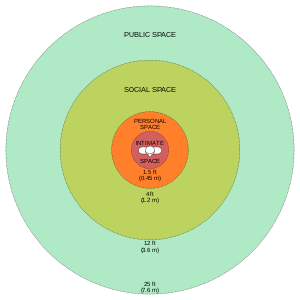
In research design, especially in psychology, social sciences, life sciences and physics, operationalization or operationalisation is a process of defining the measurement of a phenomenon which is not directly measurable, though its existence is inferred from other phenomena. Operationalization thus defines a fuzzy concept so as to make it clearly distinguishable, measurable, and understandable by empirical observation. In a broader sense, it defines the extension of a concept—describing what is and is not an instance of that concept. For example, in medicine, the phenomenon of health might be operationalized by one or more indicators like body mass index or tobacco smoking. As another example, in visual processing the presence of a certain object in the environment could be inferred by measuring specific features of the light it reflects. In these examples, the phenomena are difficult to directly observe and measure because they are general/abstract (as in the example of health) or they are latent (as in the example of the object). Operationalization helps infer the existence, and some elements of the extension, of the phenomena of interest by means of some observable and measurable effects they have.
Sometimes multiple or competing alternative operationalizations for the same phenomenon are available. Repeating the analysis with one operationalization after the other can determine whether the results are affected by different operationalizations. This is called checking robustness. If the results are (substantially) unchanged, the results are said to be robust against certain alternative operationalizations of the checked variables.
The concept of operationalization was first presented by the British physicist N. R. Campbell in his 'Physics: The Elements' (Cambridge, 1920). This concept spread to humanities and social sciences. It remains in use in physics.[2][3][4][5][6][7]
- ^ Antonio Damasio (1999) The Feeling of What Happens: Body and Emotion in the Making of Consciousness ch.2, p.55
- ^ Inguane, R., Gallego-Ayala, J., & Juízo, D. (2013). Decentralized water resources management in Mozambique: challenges of implementation at river basin level. Physics and Chemistry of the Earth, Parts A/B/C.
- ^ Wright, R. (2007). Statistical structures underlying quantum mechanics and social science. International Journal of Theoretical Physics, 46(8), 2026-2045.
- ^ Atmanspacher, H. (1994). Is the ontic/epistemic distinction sufficient to describe quantum systems exhaustively?. In Symposium on the Foundations of Modern Physics (pp. 15-32).
- ^ Svozil, K. (1990). The quantum coin toss-testing microphysical undecidability. Physics Letters A, 143(9), 433-437.
- ^ Downing, K. L. (1992). A qualitative teleological approach to cardiovascular physiology. Recent advances in qualitative physics, 329.
- ^ Martens, H., & de Muynck, W. M. (1990). The inaccuracy principle. Foundations of physics, 20(4), 357-380.